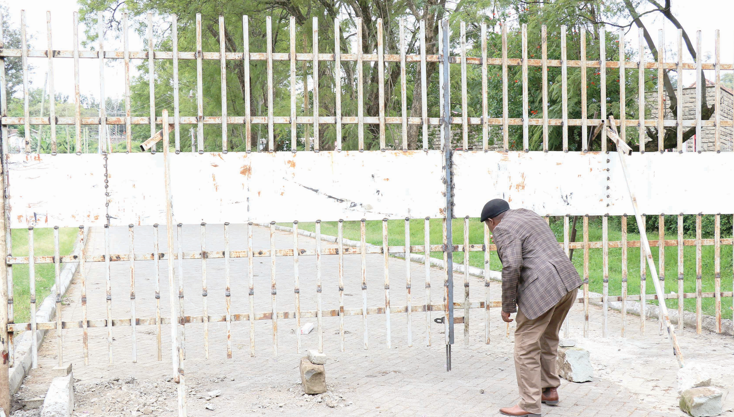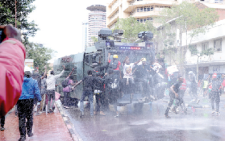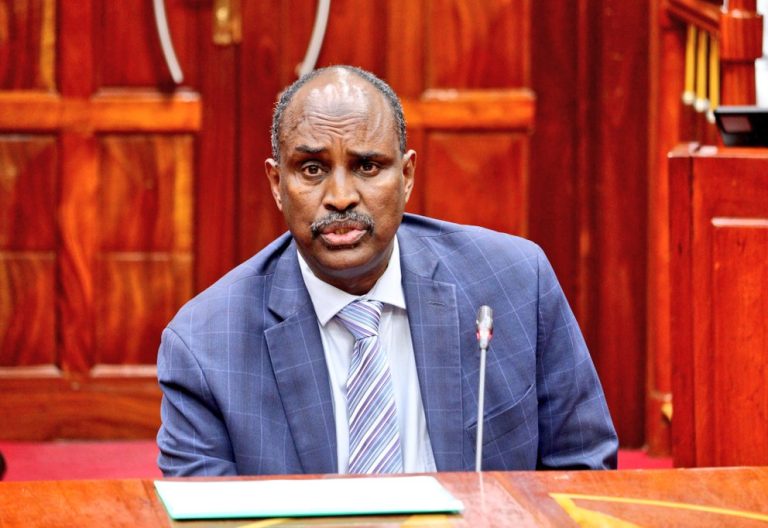Hospital shuts down after take over by Nakuru County

A takeover of the Nakuru War Memorial Hospital by the local county government over the weekend has left services at the 100-year-old facility paralysed.
During a visit to the hospital yesterday indicated the hospital has been closed down with no patients and staff on sight save for a few security guards.
The hospital was taken over by the county government on the night of October 27, 2023 in an operation led by County Secretary Dr Samwel Mwaura and top health officers.
“The takeover was done in a very seamless way. We placed the interest of the patients first and none of them missed anything because of the takeover,” said Dr Mwaura.
During the process, the hospital had 18 patients who were given the choice of being discharged, moved to Rift Valley Provincial General Hospital (PGH) Annex or another facility of their choice.
Patients who did not wish to be named expressed their shock citing that the facility was one of the best in the county. “It had the best equipment for MRI and dialysis. I was surprised to find its doors locked. Even as the county government takes over, it is our hope their services will match what was being offered previously,” said a patient who declined to disclose her details.
Colonial government
Nakuru War Memorial Hospital was established by the colonial government in 1921 and primarily served the colonialists and elites in the society.
During the time, the hospital was managed by a Trust which had government representation and other directors.
The late Kenya’s founding president Jomo Kenyatta who visited the facility in 1971 was impressed by the state of the facility but was concerned by the fact that it was operating as a private hospital.
Through a verbal declaration, Kenyatta directed that the facility which sits on an 11.25-hectare prime land next to Nakuru Statehouse is divided into two to establish a public wing.
This led to the establishment of Rift Valley PGH Annex which shared the magnificent hospital building with Nakuru War Memorial Hospital, thus setting the stage for a controversy between the two facilities.
pop-up markets during the weekend in specific areas, but only upon payment.
“Pop-up markets are allowed upon payment of applicable rates, rent and fees only on weekends,” reads the program.
However, the pop-up markets can only be set up along Kenyatta Avenue (Service lanes between Koinange and Kimathi Streets) and Sunken Car Park.
A daily cess fee will be applied to hawkers who intend to conduct vending business in the rehabilitated backlanes in the CBD.
“Street vending business operations in the rehabilitated backlanes shall be done 24 hours every day by traders designated to those lanes through applicable procedures,” Sakaja stated.
The various lanes, including Turkana, have already been painted, ready for hawkers to be allocated spaces.
Other areas earmarked for paint works include Sotik, Posta and Kirinyaga.
In the program, the Governor has made it clear that there is no trading allowed on roads (carriageway) throughout the city.
“Street vending is only allowed beyond Tom Mboya Street downwards. Street vending from upper Tom Mboya upwards is strictly prohibited,” Sakaja added.
He explained that the program is aimed at ensuring organized trade and uphold the rights of other stakeholders such as motorists, pedestrians and formal business owners.
“The County Government of Nairobi, through the County Sector for Business and Hustler Opportunities, is keen to provide livelihood opportunities for thousands of informal traders who depend on street vending for their daily income,” Sakaja said.
Going further, the county boss outlined conditions and regulations that all traders in the CBD are expected to adhere to.
All hawkers are expected to ensure that their area of operation is clean and litter free before and after business operations
Sakaja also made it clear that the size of each slot is 3 by 3 feet within clear and adequate space left along the street and in between pallets for pedestrian traffic.
“The traders shall operate on standardized pallets as per specifications provided by the line department,” he noted.
The Governor urged the traders to strictly operate within the designated pavements and streets only.
Any trader who does not adhere to this protocol shall be subject to enforcement action by county government in line with applicable laws and regulations
“Law and order must be fully adhered to during the proposed business hours,” Sakaja added.
As early as 7 am, hawkers have been camping brazenly along various streets, lanes and avenues within the CBD blocking roads and pavements, crowding out pedestrians, contributing to garbage menace and blocking business entrances denying business to legitimate traders.
Along Latema and River roads, the hawkers are stationed from mid-morning to evening, always alert to impending sweeps by enforcement officers.
It’s always a cat-and-mouse game along Ronald Ngala and Mfangano streets between the hawkers and enforcement officers.
Tom Mboya Street has also been converted into a hawking zone as some hawkers allegedly steal, pickpocket and commit other crimes.
Still, a lot of people buy from hawkers. Over the years, these ‘CBD owners’ have proved they cannot be evicted or persuaded to move, despite vigorous attempts by successive county governments. Heavy-handed roundups don’t work. They just surge back.
However, Sakaja plans to make the impossible, possible by relocating the hawkers from uptown,
This will not only reduce congestion from the pavements and streets but also give them a specific place to operate from.
In his Sh42.3 billion budget which was passed by Nairobi MCAs in June Sh100 million was allocated for the relocation of informal traders (hawkers) from the main streets.
End








